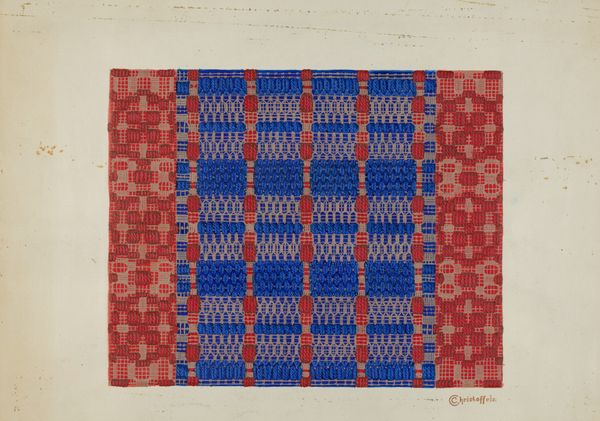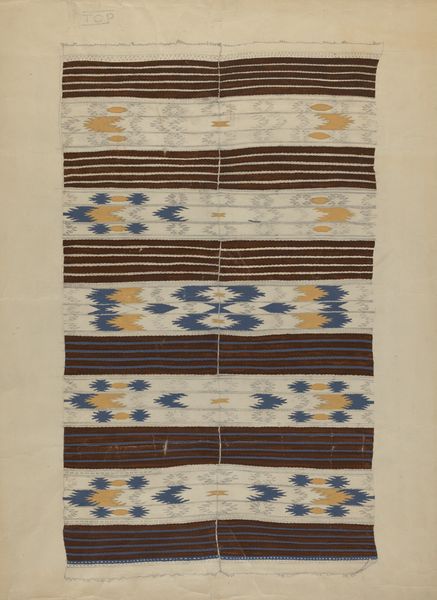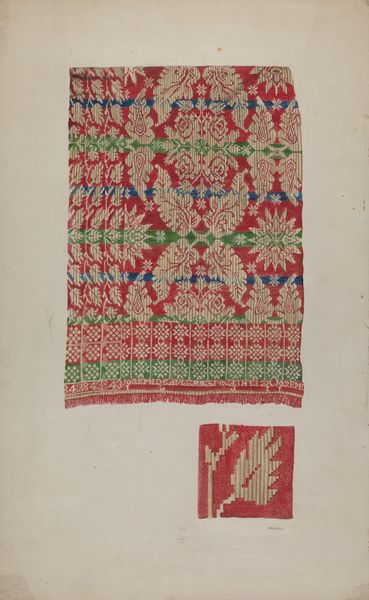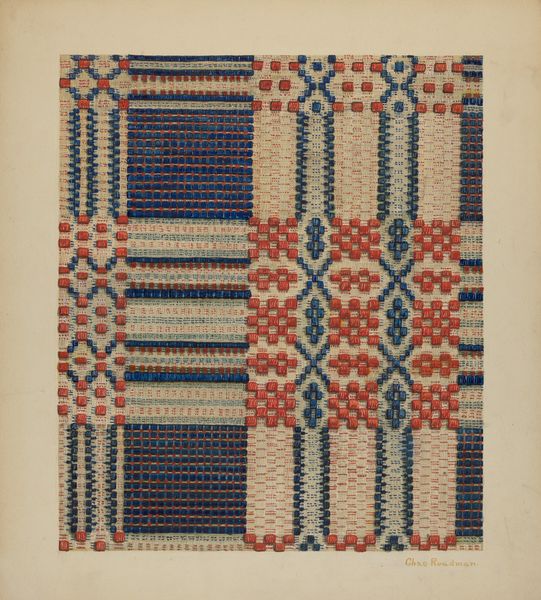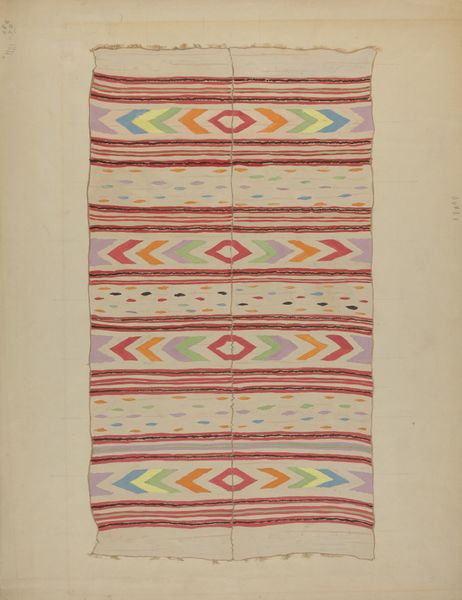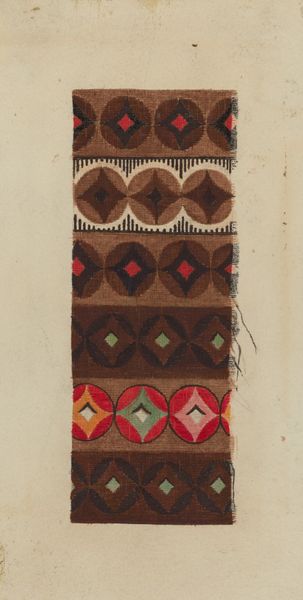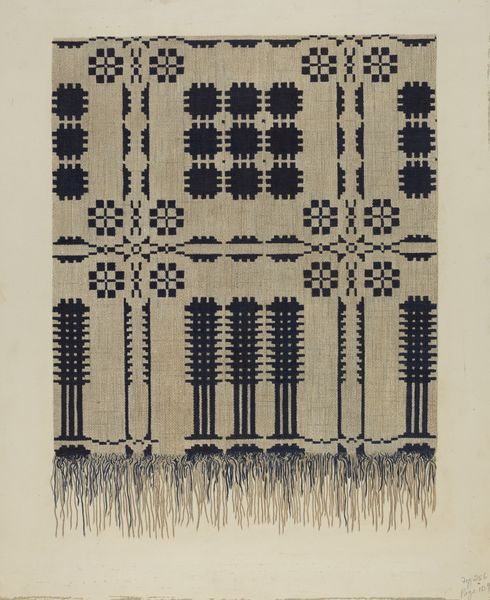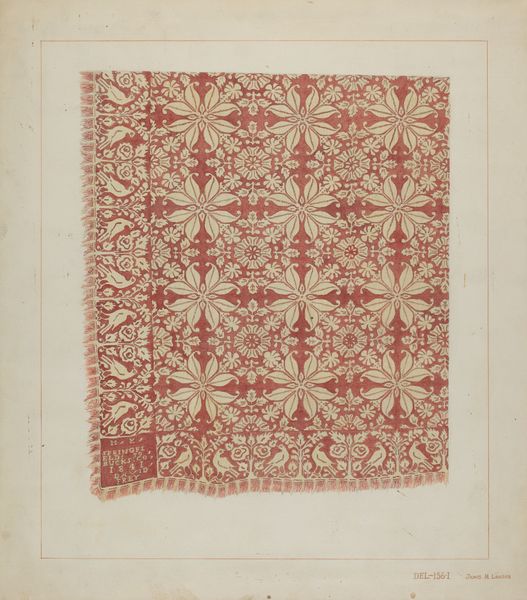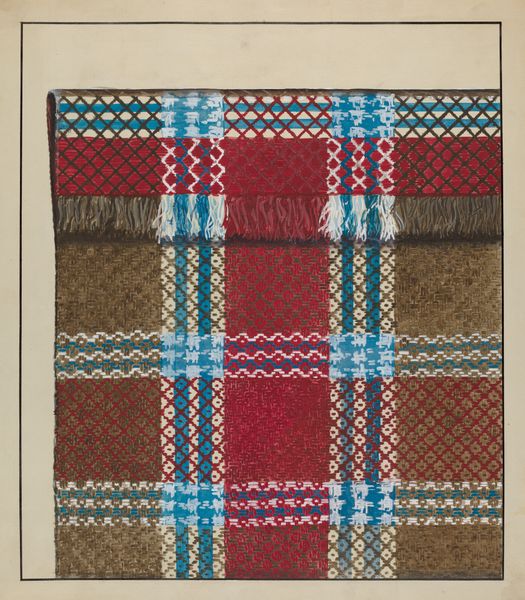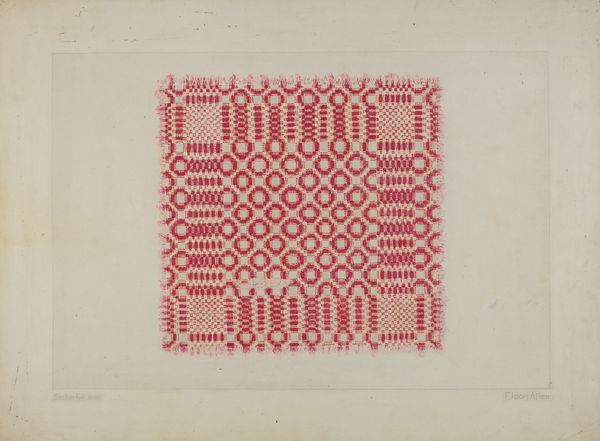
weaving, textile
#
weaving
#
textile
#
organic pattern
#
geometric
#
pattern repetition
Dimensions: overall: 35.4 x 27.9 cm (13 15/16 x 11 in.)
Copyright: National Gallery of Art: CC0 1.0
Curator: Here we have Sarah F. Williams' "Coverlet," crafted around 1940. It's a striking example of textile art, showcasing her skill in weaving and pattern design. Editor: Oh, wow, it’s like stepping back into Grandma’s attic. So homey and…mathematical! The repeated patterns are calming in a strange way. Curator: The materiality speaks volumes. Notice the probable use of locally sourced materials. Handwoven textiles like these often reflected the available resources and skills within a community. The patterns also carried social and cultural significance, acting as a visual language for the maker and user. Editor: You know, I'm just imagining someone carefully selecting each thread, the rhythm of the loom, a story unfolding with every pass. And the tassels! A little touch of celebratory exuberance against all the structure. Curator: Exactly! It transcends mere function. We should think of this process through labor; women’s labor and craftsmanship in the domestic space have often been undervalued. Yet the 'Coverlet' exhibits a sophisticated understanding of design principles. Editor: Right. You've got the rigorous grid meeting the soft imperfections of something handmade, making for such an emotionally loaded and charming object. Almost dreamlike, isn't it? As if this artifact whispers secrets of past. Curator: Precisely. Through process and material we learn of a shared humanity, a lineage of makers… And maybe, that domestic production need be examined not merely a hobby, but skilled labor contributing real cultural and aesthetic value. Editor: Mmm, I hear that. It makes me want to run my hands along the textures. I get it. Thanks for that perspective.
Comments
No comments
Be the first to comment and join the conversation on the ultimate creative platform.

